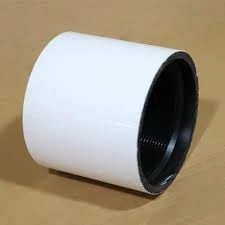- Afrikaans
- Albanian
- Amharic
- Arabic
- Armenian
- Azerbaijani
- Basque
- Belarusian
- Bengali
- Bosnian
- Bulgarian
- Catalan
- Cebuano
- Corsican
- Croatian
- Czech
- Danish
- Dutch
- English
- Esperanto
- Estonian
- Finnish
- French
- Frisian
- Galician
- Georgian
- German
- Greek
- Gujarati
- Haitian Creole
- hausa
- hawaiian
- Hebrew
- Hindi
- Miao
- Hungarian
- Icelandic
- igbo
- Indonesian
- irish
- Italian
- Japanese
- Javanese
- Kannada
- kazakh
- Khmer
- Rwandese
- Korean
- Kurdish
- Kyrgyz
- Lao
- Latin
- Latvian
- Lithuanian
- Luxembourgish
- Macedonian
- Malgashi
- Malay
- Malayalam
- Maltese
- Maori
- Marathi
- Mongolian
- Myanmar
- Nepali
- Norwegian
- Norwegian
- Occitan
- Pashto
- Persian
- Polish
- Portuguese
- Punjabi
- Romanian
- Russian
- Samoan
- Scottish Gaelic
- Serbian
- Sesotho
- Shona
- Sindhi
- Sinhala
- Slovak
- Slovenian
- Somali
- Spanish
- Sundanese
- Swahili
- Swedish
- Tagalog
- Tajik
- Tamil
- Tatar
- Telugu
- Thai
- Turkish
- Turkmen
- Ukrainian
- Urdu
- Uighur
- Uzbek
- Vietnamese
- Welsh
- Bantu
- Yiddish
- Yoruba
- Zulu
Understanding Bull Plug Pressure Ratings and Their Importance in Industry Applications
Understanding Bull Plug Pressure Ratings
In various industrial applications, especially in oil and gas, water treatment, and chemical processing, maintaining the integrity of fluid systems is crucial. One important component in these systems is the bull plug, a type of fitting that seals the end of a pipe or vessel. The pressure rating of a bull plug is a critical factor to consider for safety and performance. This article explores what bull plug pressure ratings are, their significance, and factors that influence these ratings.
What Is a Bull Plug?
A bull plug is essentially a closed fitting that provides a seal for the end of a pipeline or a pressure vessel. Unlike other fittings, which may allow flow to continue or to be diverted, bull plugs are designed to completely block flow. They come in various materials, typically metals like steel, brass, or plastic, depending on the application and environmental conditions.
Importance of Pressure Ratings
Pressure ratings for bull plugs indicate the maximum pressure the fitting can safely withstand while maintaining its integrity. This is essential for preventing leaks, ruptures, or catastrophic failures in high-pressure systems. When selecting a bull plug, engineers must ensure that its pressure rating aligns with the operational conditions of their systems, which include the type of fluid, temperature, and pressure levels.
Factors Influencing Pressure Ratings
1. Material Composition The material from which the bull plug is made significantly impacts its pressure rating. For example, stainless steel has a higher pressure tolerance compared to plastic fittings. Each material has a limit beyond which it may deform or fail, making it crucial to choose the right one for specific applications.
bull plug pressure rating

2. Temperature The operating temperature also plays a role in determining the pressure rating of a bull plug. High temperatures can weaken materials and lead to pressure failures. Therefore, specifications often provide pressure ratings that correspond to different temperature ranges.
3. Diameter of the Plug Generally, larger diameter plugs may have lower pressure ratings than smaller ones due to the increased surface area subjected to stress. This means that engineers must consider the size of the bull plug in conjunction with the intended pressure levels.
4. Manufacturing Standards Different standards and certifications (like ANSI, ASTM, or API) that a bull plug adheres to can affect its design and performance criteria. Products manufactured under stringent standards are likely to demonstrate better reliability and durability under pressure.
5. Installation Practices The way a bull plug is installed can also influence its pressure performance. Proper installation according to manufacturer guidelines ensures a good seal and maximizes the fitting’s capabilities.
Conclusion
Choosing the right bull plug involves an understanding of its pressure rating and the factors that contribute to it. Engineers must evaluate both the specifications of the bull plug and the operational parameters of their systems to ensure safety and efficiency. Failing to select a fitting with an appropriate pressure rating can lead to serious safety hazards, including leaks or explosions, which can have severe consequences for human safety and the environment.
In conclusion, while bull plugs might seem like simple components, their pressure ratings and the engineering behind them are crucial for reliable and safe system operations. Always consult with manufacturers or industry specialists to select the appropriate bull plug for your specific application, keeping in mind the operational pressures and environmental conditions you will face.
-
Tubing Pup Joints: Essential Components for Oil and Gas OperationsNewsJul.10,2025
-
Pup Joints: Essential Components for Reliable Drilling OperationsNewsJul.10,2025
-
Pipe Couplings: Connecting Your World EfficientlyNewsJul.10,2025
-
Mastering Oilfield Operations with Quality Tubing and CasingNewsJul.10,2025
-
High-Quality Casing Couplings for Every NeedNewsJul.10,2025
-
Boost Your Drilling Efficiency with Premium Crossover Tools & Seating NipplesNewsJul.10,2025







